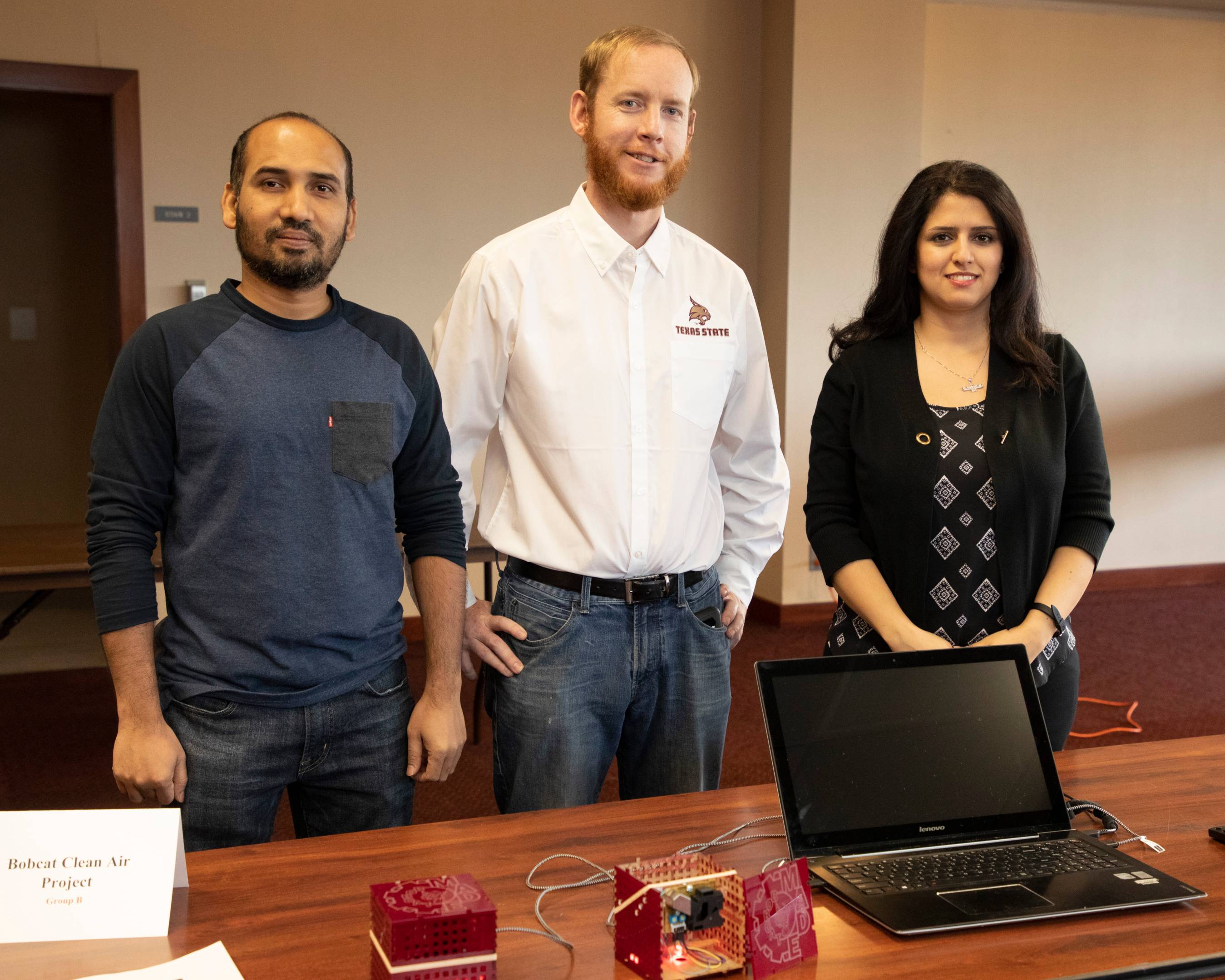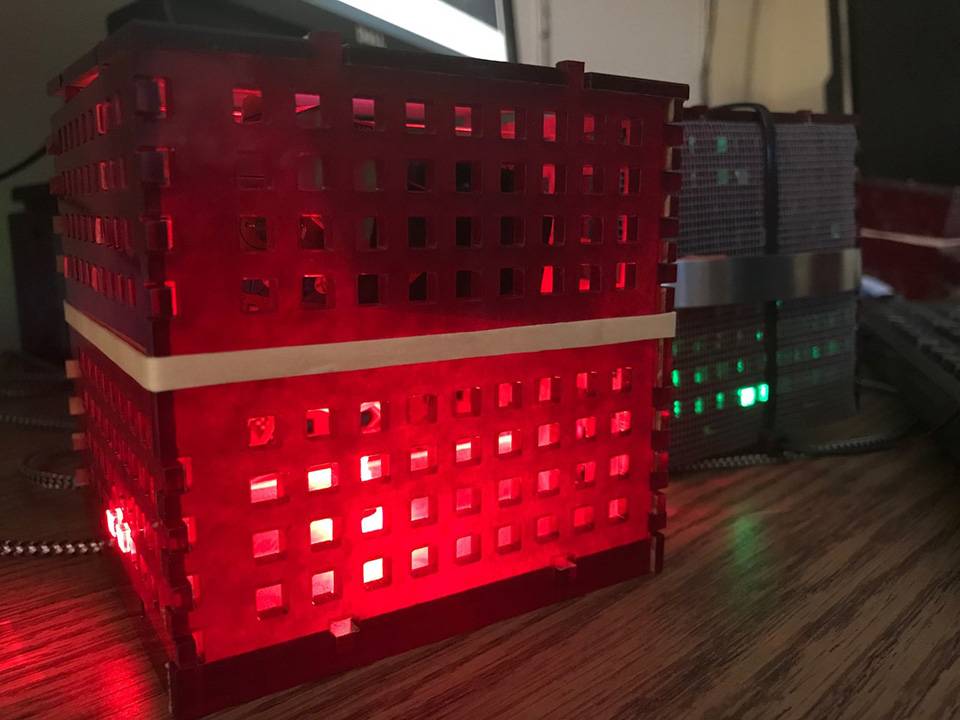Students build air quality sensors for Bobcat Clean Air Project
Manuel Garcia | March 4, 2019

Have you ever wondered what’s in the air? Well, that’s precisely what David Mills, executive director and president of the Bobcat Clean Air Project, and a Ph.D. student from the College of Liberal Arts’ Department of Geography is trying to figure out. Joining him is Guixing Wei, vice president and senior geographic scientist from Brown University; Shadi Maleki, treasurer and an advocate for children’s health; and Niaz Morshed, secretary and a specialist in human health and serves as the project's environment secretary.
The concept is simple: a sensor, about the size of a coffee mug, senses particulate matter or “PM readings” down to one microgram meter cubed (1 ug3). The readings are essential because the collected data determines how many harmful particles are in the air. Size, origin and frequency play a massive role in deciding if particles can penetrate the lungs and have long-term effects on overall health.
Where these particles begin, might come as a shock.
“Most of the time from where we’re at [Texas State University], the wind is blowing from the south, it’s the southernly wind coming northward, and down below we have two concrete plants. There’s a lot of site dust [625 tons of PM in 2017] that’s [potentially] going to be coming [from] Comal County… if you look a little southeast [of Texas State University], there’s a powerplant right there [and] a lot of the emissions [84 tons of PM in 2017] coming out of the top of that power plant…Even though there’s a plume [of particulate matter released at a higher altitude], it doesn’t necessarily mean as that mixes into the atmosphere and comes towards us, that we are not catching some of that particulate matter from the power plant.” says Mills.


The Texas Commission on Environmental Quality (TCEQ) has one EPA sensor in San Marcos located just southeast of Interstate Highway 35 which leaves Texas State and the City of San Marcos, Texas with very sparse data. One of the many goals of this project is to discover and compare what the Bobcats are breathing compared to others in the surrounding areas.
In partnership with the Bobcat Made Maker Space, which is funded by the National Science Foundation, the team was able to construct the sensor entirely from recycled materials. On the bottom of the sensor is the logo of the Texas State Environmental Service Committee, which donated about $5,000 to the project. The sensor features weather-protected USB ports to charge the device, WiFi to send live PM readings, and a LiPo battery that allows the sensor to collect data for about a week at a time when not connected to a network. The components inside of the sensor cost $8, allowing the device to be modified.
“We would like to encourage students if they're interested in this, environmental or business or otherwise, to try to make some of these sensors and then they can check out what it’s like in their dorm room or what it’s like in any room or building that they want to walk into…maybe they can plug it into their car if they want to see what it’s like [when] they’re driving.”
The students are also using the sensors to collect data at the university’s daycare, the Child Development Center (CDC). Mills and his team are experimenting with different sensor installation locations at the CDC. “For kids with asthma especially…. maybe we can come up with a predictive way to help.”
Mills and his team are experimenting with different installation heights for the sensors, to see if placement is a factor in determining the amount of matter in one location versus another. This theory will be specifically applied in an area where children are most vulnerable. “For kids with asthma especially…. maybe we can come up with a predictive way to help.”
With great power comes great responsibility, which is what this team has in store for them. To ensure that the sensors are secured and have the technology necessary to prevent cyber-attacks, the team has begun discussions with the Building and Planning Committee, as well as the Division of Information Technology.
For the Bobcat Clean Air Project, student safety and education are some of the main goals. To be impactful, Mills says everyone needs to be on board.
“It takes a movement and a lot of people because we are talking about things like power plants, so maybe it’d be changing people’s voting habits based on certain issues they weren’t aware of before," says Mills.
On March 10, the team is hoping to discuss ideas and hear feedback from others at the 2019 Texas State University Innovation Lab at the SXSW Interactive Festival. For more information, visit http://www.atmovision.com/

Share this article
For more information, contact University Communications:Jayme Blaschke, 512-245-2555 Sandy Pantlik, 512-245-2922 |